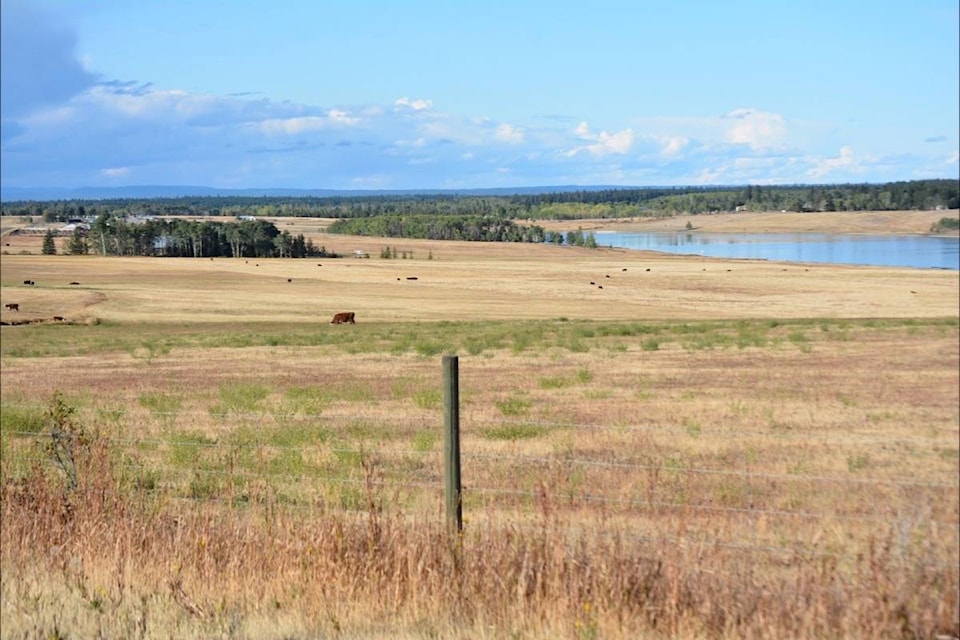The future of farmland on the Saanich Peninsula is a hot topic right now, particularly when it comes to marijuana growing on land held in the province’s Agricultural Land Reserve. The provincial government’s public consultation on the future of the ALR is closing at the end of April, but marijuana is not the only issue at stake.
RELATED: ALR land is no place for pot greenhouses, says Central Saanich group
Ty Jones of West Coast Micro Greens of Victoria grows living herbs for grocery stores and cherry tomatoes. He sells his produce through Red Barn, Country Grocer and local restaurants and makes urban farming kits. He wants to start a fruit and vegetable processing facility with his business partner to act as a value-added service for farmers in the region, but finding the land has been difficult.
Under current rules, half of the food that enters a processing facility on ALR land must be grown on that land, which is a barrier to accepting produce from other farms. It is costly to buy the equipment required, said Jones, “but when you add that to the high cost of land, it becomes extremely prohibitive.”
Jones said he needs at least five acres of space for a processing facility and recently visited a 19-acre parcel of land listed at $2.6 million.
“If we were going to build a facility and start running that, it’d be in the $4 million range by the time we’re done.”
He said while he could place it on industrial land, he wants space for greenhouses so he doesn’t have to rely exclusively on other farms to support his business.
Jones said many farmers have “a lot of wasted product in shoulder season.” As an example, he said pumpkins are grown in the summer in time for Halloween, and “if there’s not enough demand, the pumpkins will just get plowed back into the field.” Jones wants better processing facilities on the island to turn those unused pumpkins into shelf-stable, non-perishable items (pumpkin spice syrup, for instance). A farmer could still put their brand name on the processed product, said Jones.
At a public dialogue on agriculture in MLA Adam Olsen’s office, Jones said he saw unprocessed butternut squash on a store shelf for $1.89 a pound, but spiralized squash (created through a relatively simple form of processing) sold for over three times that.
“We’re talking about healthy, natural processing. We’re not talking McDonald’s, or anything like that,” said Jones.
RELATED: Agriculture concerns go beyond pot farms
Ann Eastman, a member of the transition team for the former Sandown racetrack in North Saanich, is also on the board of the Haliburton Community Organic Farm. She agrees with Jones on the processing issue and added that permissible building size and activities are a concern for her.
In the context of Sandown, the 83-acre parcel of municipal land is considered one block. Under current ALR policies for Zone 1 (Vancouver Island, the Okanagan and the South Coast), one single-family home is allowed on ALR land (with a secondary suite if local bylaws permit) as well as one manufactured home, but that is for immediate family members only. Since it is 83 acres, and the Vision Sandown public consultation envisioned multiple farming operations on-site, housing large numbers of Canadian farm workers on that site would be difficult or impossible under current regulations. The rules for temporary migrant farm workers, though, are different.
Migrant workers under the federal Seasonal Agricultural Worker Program can live on or off the farm, and there are guidelines from the Ministry of Agriculture for those housing conditions (number of washrooms, amount of living space, etc.), but they can be modified by local governments. Eastman said there is some concern such facilities could be misused, for instance, used as short-term rentals, a concern noted in the province’s 2009 discussion paper.
On a broader scale, Eastman says the primary mission of the ALR should be food security, not just protecting the land for its own sake. She said the act does not emphasize local food production, and it “doesn’t protect farmers in any way, or encourages them.” She sees food security as more than just land use management. Instead, it requires looking at the system as a whole. For instance, Eastman said a lack of abattoirs on the Island has led to a reduction in manure for fruit and vegetable farms because there are fewer animals being raised and slaughtered here. By contrast, the Fraser Valley has a surplus of manure. Ideally, Eastman says farming is a circular enterprise where one operation contributes to another.
“The concern about food security and wanting a stable system that supports agriculture is just so important to a lot of people,” she said.
Jones says he wants to stay a farmer because “everybody eats,” and it’s an ethical business to be in. He said more young people would get into farming if it paid better.
“The average age of a farmer in Canada is 50, and I’m 31,” said Jones. “I think we need a lot more young farmers to fill the supply gap to make sure we don’t just have food security but food sovereignty.”
To provide feedback to the Minister of Agriculture on the future of the Agricultural Land Reserve, visit engage.gov.bc.ca/agriculturallandreserve/
reporter@peninsulanewsreview.com
Like us on Facebook and follow us on Twitter
